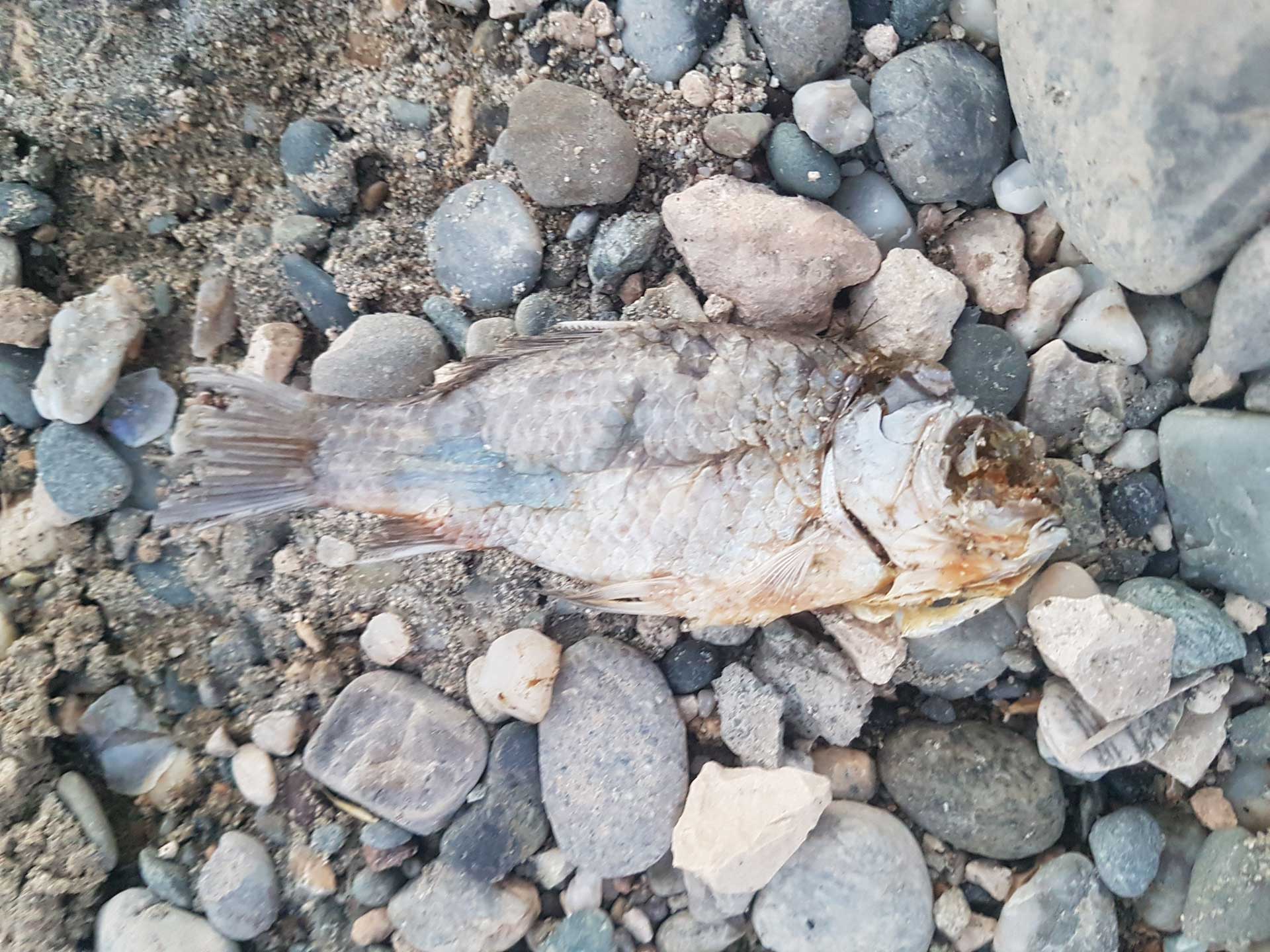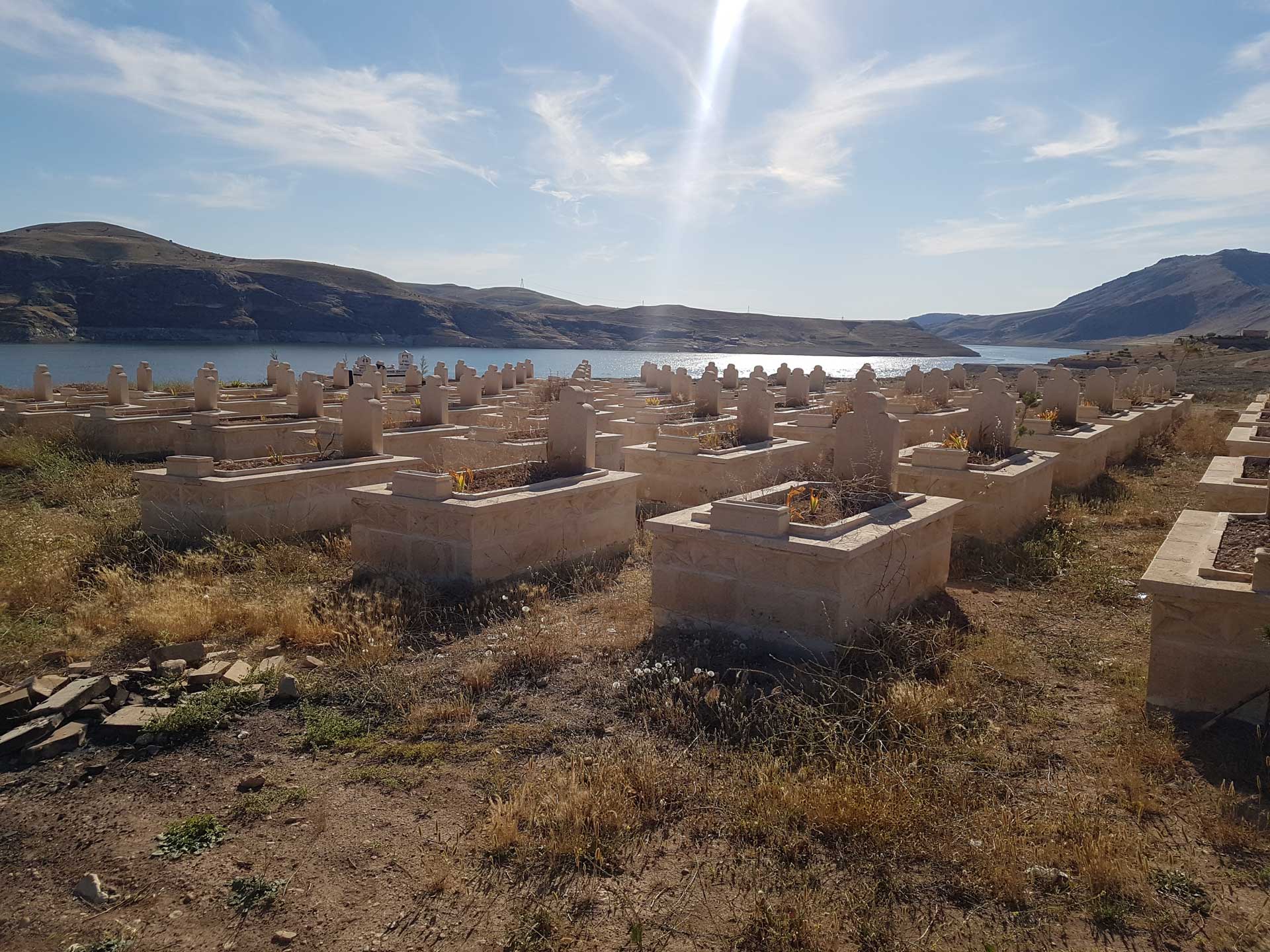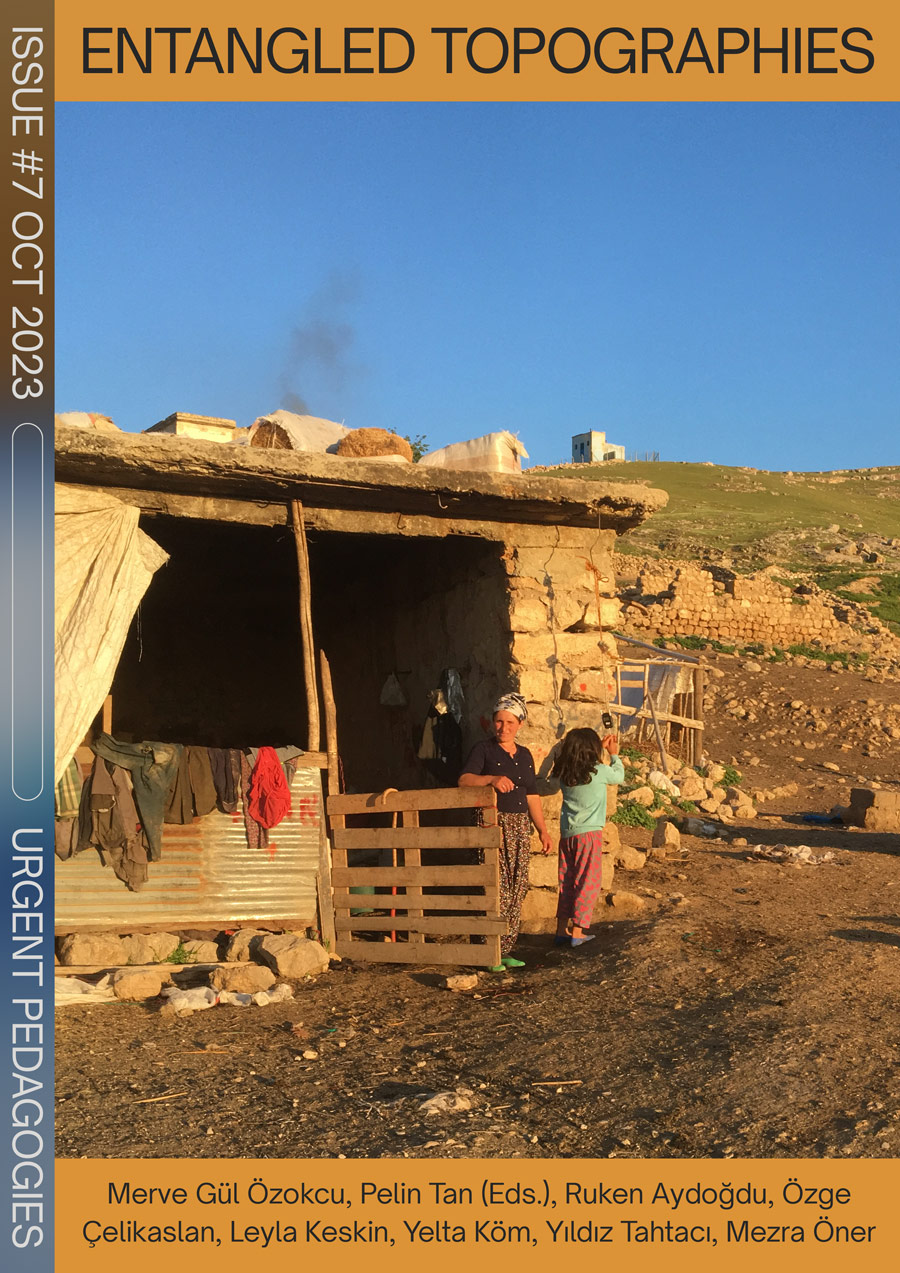Ecological Mourning: Extinction of fish in Tigris river
Leyla Keskin
CATEGORY
The state-led water-dam project on the Tigris River’s influence on the ecology is forcing us to find the language of ecological mourning that connects the struggle of a more-than-human-world.
“Go along the rivers
Where and why the rivers are still
Where and why the rivers are gruff
Where and why they are meandering
Where and why they are cascade and cheesy
See with your eyes, hear with your ears
So, see and hear how rivers reach to sea”
—Hasan Hüseyin KORKMAZGİL
In recent years, many water dams were built on almost every river in Turkey. Many fish species are disappearing due to those dams. Due to the deterioration in the river system with dams and the changes in the river system, the habitats and living areas of fish species are greatly affected. Accordingly, the extinction of the diversity of fishes is the outcome.

Fish that died due to the rising and falling of the river Photo: Leyla Keskin
At the same time, a large number of fish deaths appear as an outcome of arbitrary water flow. The result of opening and closing the gates of the dam and the lowering or rising dam waters affects the water flow. Closing the dam gates prevents fish eggs that the fish leave on the shore during the breeding season. Therefore, the breeding season of fish is interrupted. Furthermore, the instant opening and closing of dam covers on the river raises the level of water, which creates a shocking effect for fish. The water level of the Tigris increases with the opening of the dam covers and the low temperature of the water level that rises up on the surface affect the fish. As a result, the heat of the water changes, and at the same time keeping gates open for a long time cause fish to lose their lives.
The water quality is transformed according to water dam’s control on the river which lead to physical and chemical changes of the water; this affects the nutrition chain for the fish. This results in the extinction of diversity of fish. According to the research by Dicle University, the types of fishes reduced from forty to almost three – four types in the Tigris basin of Diyarbakır and Batman towns [1].
Many variations of species of fish that are dependent on the Tigris and Euphrates river systems will not be able to survive due to the lack of suitable spawning and fry rearing areas. The increase in depth and consequent decrease in water temperature and fragmentation of migration corridors are the main reasons for the disappearance of spawning and brood breeding grounds [2]. The species of fish also diminished from more than fourth types to three. In summary, the water dam project that supposed to support economically and ecologically the society creates harm and destruction in the basin of the Tigris. Water dam as an infrastructure of extraction is a tool of ecocide that destroys not only the human environment but also non-human ecologies.

Graves that relocated. Photo: Leyla Keskin
Ecological Mourning: Extinction of fish in Tigris river is part of Urgent Pedagogies Issue#7: Entangled Topographies
1.
Se website www. gaiadergi.com
2.
Kuru, M., “Dicle ve Fırat Nehir Sistemlerinde Yaşayan Balık Türleri ve Korunma Statüleri”, XIII. Ulusal Biyoloji Kongresi,
17-20 Eylül 1996, Hidrobiyoloji Seksiyonu, c. V, s. 88–97, İstanbul, 1996.
is an artist and painting teacher in middle school. Her research is focusing on the extracted geographies of Southeast Anatolia. In her practice and artistic research, she deals with spatial production, temporality, memory, and belonging. Ecological Mourning is the main theme in her practice and research, with her field research centred in Ilısu Waterdam and the Tigris Valley. She researches dispossessed lands, cultural heritage, agro-ecological practice as resistance, and rights of rivers. She is completing her masters degree on the topic of Ecological Mourning and Hasankeyf in the Visual Communication Design program at Mardin Artuklu University in 2022. In the meanwhile, she conducts pedagogical studies on Visual Arts and Drama for children in the age group seven and sixteen.

